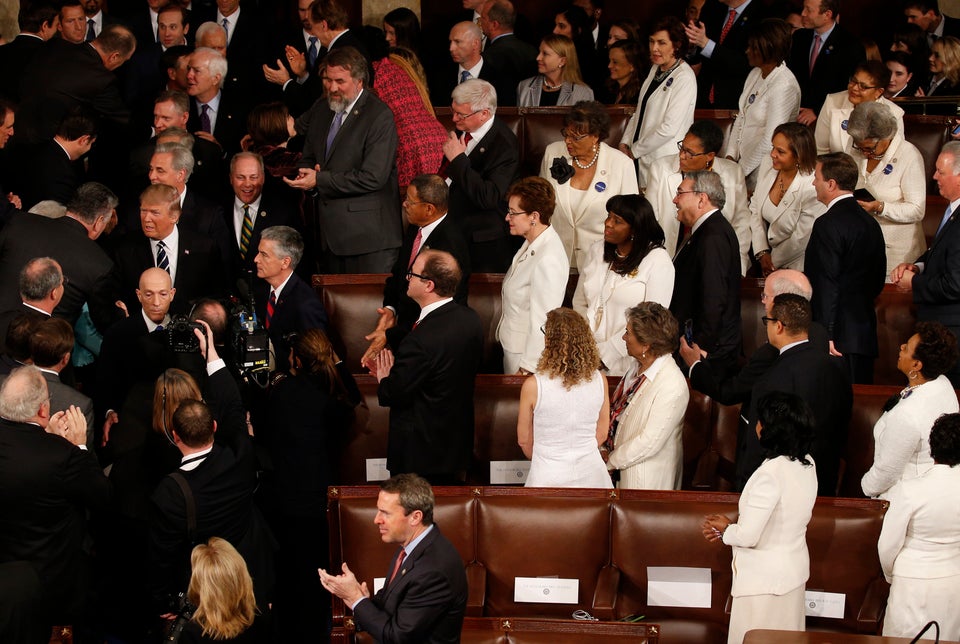In his speech to the Joint Session of Congress, the president uttered these words: “My administration wants to work with members of both parties to… help ensure new parents that they have paid family leave.”
After years of working to pass paid family leave, we had to make sure the TV was on the right channel. Was this a repeat of the Academy Awards? Had someone delivered the wrong envelope? Or had we been led into the universe of alternative facts?
Last year we were proud to see how many presidential candidates talked about paid leave. It showed the power of our movement, a movement which has been winning on the issue for more than a decade, helped establish programs in three states, won in two more states in 2016 and could double the total in the next several years. We see that momentum reflected in the overwhelming public support for the issue and growing number of sponsors for a federal bill. We can also see it in the increased recognition from best practice employers that the way to attract and retain talented staff is to expand paid leave options.
But the candidate proposals differed widely – and in real life, the details are what matter. They determine how much the program delivers to those who need it most, whether it will reduce or exacerbate gender, racial and economic disparities in our society.
Trump did speak about paid leave on the campaign trail. But what he was talking about was maternity leave, only for birth mothers and only for those birth mothers whose employers don’t already offer some form of paid leave.
Here’s who his plan left out: birth mothers whose “paid leave” from employers equals vacation time ― having a baby is a great joy, but it’s not a vacation – or accrued sick time, an amount that often falls far short of the time required to heal from delivery, not to mention time needed for bonding and breast-feeding. Maternity-only leave excludes all non-birth parents, including fathers, same-sex parents, adoptive and foster parents.
Such a policy also leaves out all workers whose parents break a hip or have a heart attack or struggle with cancer or some other ailment. It ignores the children of all ages and other loved ones who need care. It overlooks military families faced with needs related to deployment. And it does nothing for the 60 percent of the workforce with no access to short-term disability for their own medical needs. Since the policy applies only to women, it signals that women are a greater liability and less desirable hires.
The amount of time, a mere six weeks, is a problem even for those the program would cover. Six weeks is the minimal time required for women who deliver; c-sections require at least eight weeks – and neither amount takes into account the needs of the baby. The American Academy of Pediatrics puts that minimum at 12 weeks.
And then there’s the problem of the funding source. The president’s proposal would take the money from unemployment insurance funds, whose amounts and eligibility requirements are determined state by state. The program is already severely underfunded; only 18 states have sufficient reserves to face even a mild recession. States could also opt out of the program. And the payment amounts – ranging from a third to a half of workers’ wages – would take this option out of the reach of many low-wage women.
Fortunately, there is a paid family and medical leave policy that has a Triple A rating – Accessible, Affordable and Adequate time – which would have been revealed had the genuine winning envelope been handed over. It’s called the FAMILY Act, and would provide up to 12 weeks leave to cover all workers, for all kinds of leave (caring for a new child, or for a serious personal or family illness or injury). It has a self-sustaining funding source, pooling small contributions so workers can draw up to two-thirds of their wage. The bill has been introduced for the past several years by Sen. Kirsten Gillibrand and Rep. Rosa DeLauro – and blocked each time by the very allies of the president who stood and applauded his statement Tuesday night.
If only there’d been a stage manager to interrupt the speech and deliver the truth.


